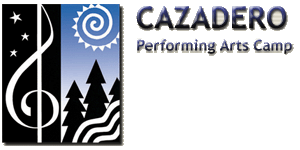Lesson Plan 39: Mosses
First posted July 7, 2004 Last
updated July 19, 2009
( Grade Level 9-12)
Remember these points from the Lesson
Plan Homepage:
(1) These lesson plans are not rigid requirements,
but a starting point for the Nature Counselor's
plan for teaching a particular day's experience.
(2) The activity should be fun and emphasize
active learning on the student's part: ask a
question, don't just state a fact.
(3) You should employ hands-on as much as possible.
(4) Plan each session to also allow time for
making entries in the Nature
Journal. |
Prior to the
session
(1) Review this section and the section on Mosses
and the Four
Groups of Land Plants.
(2) Scout out where you can find good, dry moss with
setae. There are mosses with sporophytes on most of
the larger redwoods. It would be good to also examine
some moss growing on rocks; often, along Austin Creek,
one can find very dry moss which will demonstrate the
rehydration well.
Session
(1) Start with walking around camp, observing the four
types of land plants. Go over the challenges that land
plants have (two worlds: soil and air, and the need
to connect them).
*What are the four types of land plants at Cazadero?
Can you name any of them? Can you name any of the
plants?
*What are the challenges for land plants?
(2) Walk over to the chosen study area.
* Can you show me a moss? Where is it growing? (on
the land, not in the creek)
* How is it different in appearance from other land
plants? (Short, soft, often dry, no leaves, no roots,
no stem)
(3) Take a dry moss and get it wet, watching how it
changes color to green.
* The moss was dormant, or sleeping. What happened
when we got it wet? (it woke up)
* Why is it green? (chlorophyll)
* Can other land plants dry out like this and recover?
(no)
* Is the moss tall or short? Why? (short, no vascular
system forces them to be short)
(4) Take another piece of dry moss, hold it by the
rhizoid, get the upper part wet, but not the rhizoid.
* What is this part? (rhizoid) How is it not like
a root? (does not absorb nutrients and water)
* How is it like a root? (same place on the plant,
holds it in place)
* What happened when we got it wet? Is it the same
color as the moss we got entirely wet? What does this
tell you about the rhizoid? Does moss absorb water
and nutrients from its rhizoid or through its "leaves"?
(the moss absorbs water through its "leaves",
not through its rhizoid)
* Is the wet moss hard like other land plants, or
soft? (soft, because it does not have lignin in its
cellulose)
(5) Take a piece of moss that has the sporophyte, examine
it.
* What is this brown stalk? (sporophyte generation,
with a foot, seta, and capsule, with the sporangium,
which has the spores)
* Does a moss have flowers? Seeds?
At the end of the session, all students should
know that mosses are land plants, they are different
from other land plants in that they are short and soft,
with no true leaves, stems, or roots, are non-vascular,
can dry out and recover, and that they reproduce with
spores, not seeds.

References

Acknowledgements
Back to the Lesson
Plan Homepage
|

